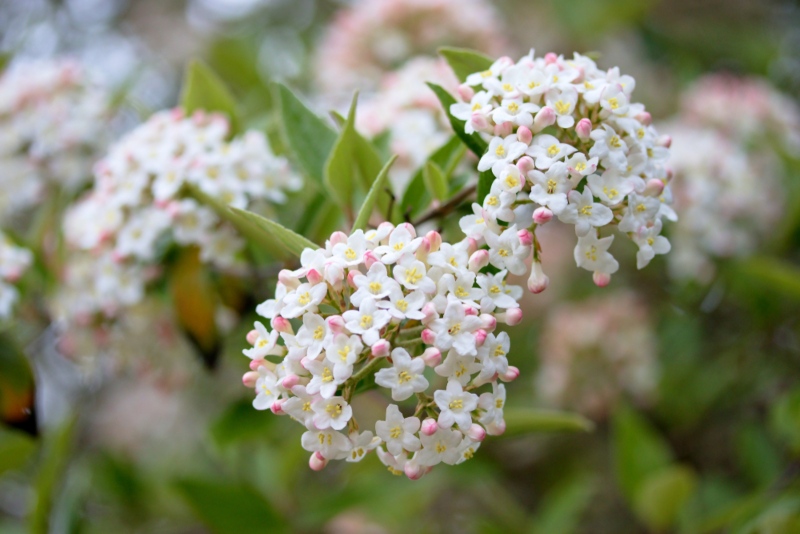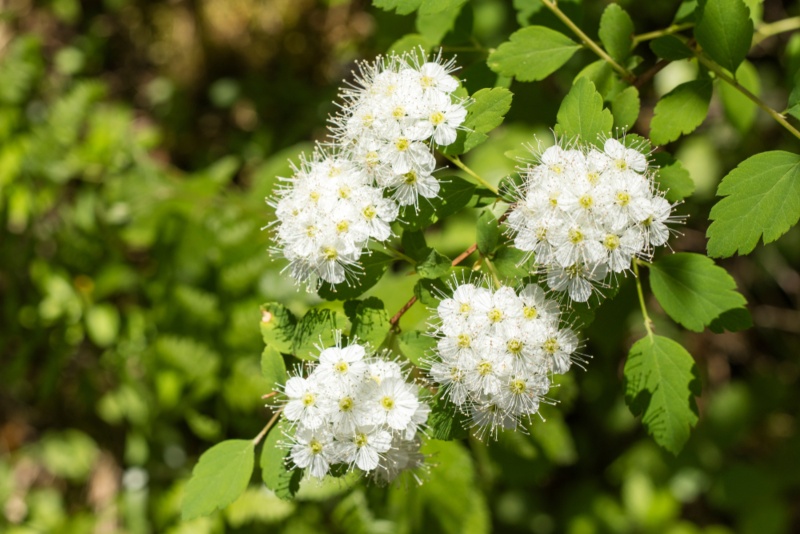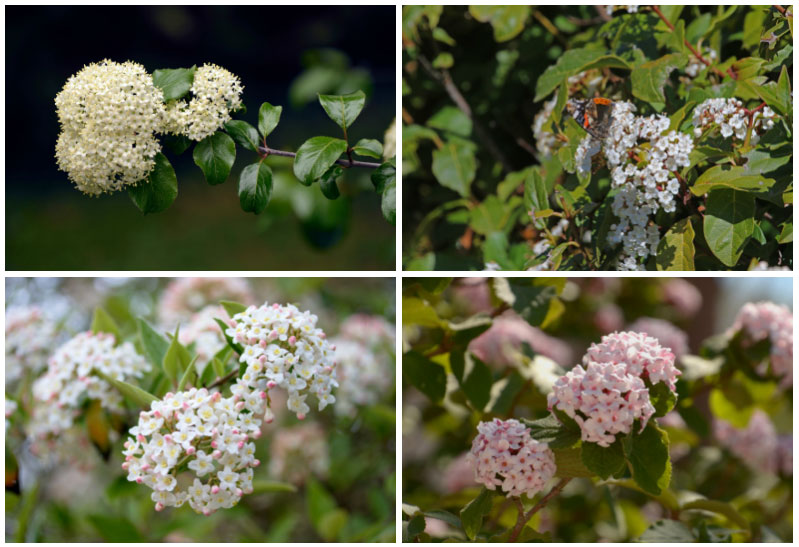
Viburnum is a genus of evergreen and deciduous shrubs and small trees whose showy foliage, flowers, and fruits make them a popular choice with landscapers and home gardeners.
When growing these shrubs, you’ll have your pick of over 150 varieties, which can range in height from 2’ to 30’ and grow anywhere from USDA Hardiness Zones 2 to 9.
Most viburnum bloom in the spring, putting out sometimes-fragrant blossoms that range in color from white to pink. Depending on the variety, they may also bear ornamental fruit in later summer or fall, followed by a brilliant display of fall coloration as the shrubs’ leaves shift from green to glossy red, purple, and scarlet.
Planting viburnum can lend year-round color and interest to your lawn or garden and learning to care for them properly will ensure that your viburnum look their finest from first bloom to fall blush.
Soil, Light, and Heat Preferences
Most viburnum grow best in moist and well-drained soils and typically prefer slightly acid soil conditions, with a pH between 5.5 and 6.6. As such, you may need to amend your native soil before planting viburnum in it. If your soil is too acidic, you can raise its pH by adding pelletized limestone. Conversely, applying soil sulfur, aluminum sulfate, or chelated iron can lower the pH of your soil, as can using organic compost.
The light preferences of viburnum can range from full sun to mostly shade, depending on the variety. However, most viburnum bloom best when exposed to a few hours of full sun, each day.
Planting viburnum where they can receive full morning sun but afternoon shade will ensure healthy blooming while protecting them from the hottest part of the day.

Growing Viburnum from Seed
Growing viburnum shrubs from seed is a lengthy process, as they can take up to 18 months to germinate. You should start your seeds by warm stratifying them, mimicking a warm, summer environment for two months.
To do so, place the seeds in wet sand, inside a sealed plastic bag, and store them between 76 to 86 degrees.
Next, you’ll need to cold stratify your seeds, mimicking a winter environment by placing the sealed bag in a refrigerator for 3 months and opening the bag once a week to exchange air. Follow this cold stratification with another period of warm stratification, which will break the seeds’ dormancy. Seeds can then be sown 1/4” to 1/2” deep in either prepared seedbeds or native soil and should germinate the second spring after planting.
Viburnum Cuttings
A simpler method, by far, is propagating viburnum by softwood cuttings. Start by removing a healthy segment of about 4” to 6” inches in length from another viburnum. You will then need to strip the lower leaves from this segment to create a scar area where new roots can form and then insert the base of this stem, past the scar area, into sand or perlite.
Cover the plants, then Keep them well watered and drained and covered, and, after six to eight weeks, new roots should have formed. Transfer these plants to pots filled with potting soil and then, after another two to three weeks, transfer them into your garden.
Container-Grown Viburnum
One of the main challenges of growing viburnum in containers is maintaining their preferred moist but well-drained soil conditions. To avoid keeping your viburnum in soggy, unhealthy soil conditions, you’ll want to plant them in a container with drainage holes and use a quality potting soil or potting mix. Additionally, mixing in 10 to 20% pumice or Perlite to your soil can help promote drainage and keep container conditions ideal for your viburnum.
When choosing a container, pick one large enough to allow for 2 or 3 years of growth. If you’re potting a nursery-grown viburnum or simply transplanting from elsewhere, this will mean choosing a container that is at least 8 inches wider than the root ball of your plant.

Watering and Fertilizing
Healthy viburnum typically need to be soaked only once a week, whether through watering or rainfall, and will not need to be fertilized more than once a year with a slow-release shrub and tree food. This should be applied after they bloom to help maintain their attractive foliage and flowers. Cease fertilizing viburnum two months prior to the first frost date in your region so as not to stimulate new growth that may be damaged by frost.
Pruning
The process of pruning a viburnum should begin when the shrub is still young to best maintain its shape across the years. Typically, you’ll want to trim viburnum back by about a third of their size, each year. Light pruning can be performed at any time but major pruning or shearing should wait until either late winter or early spring, though not while there’s still the chance of frost in your area, as exposure can damage new shoots.
When your viburnum is young, you can prune it simply by pinching the shrub’s stems and side shoots to help maintain its shape. Later, you can cut the branches back above their nodes, thus maintaining the shrub’s shape while allowing it to put out new shoots.
Following these tips for raising your Viburnum, from seed to full-grown shrub, can ensure your plant remains attractive and healthy, lending bright colors to your landscape, year-round.





